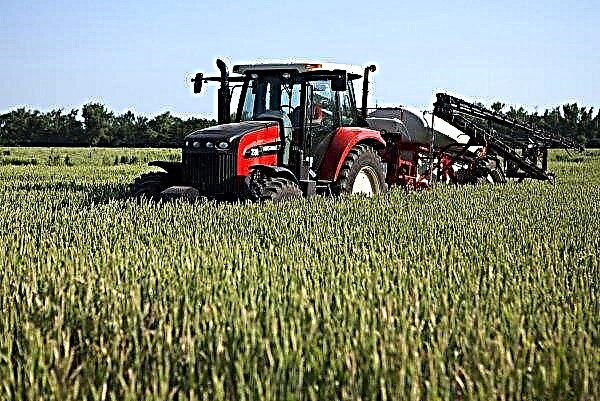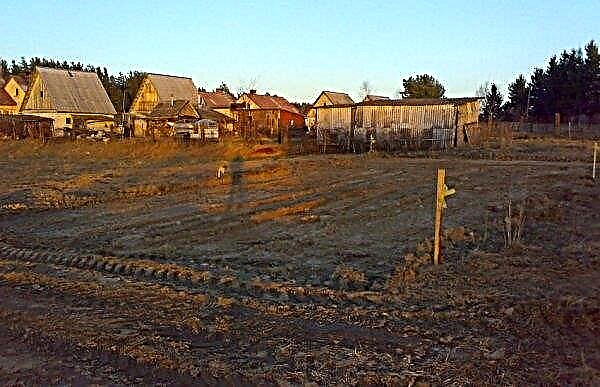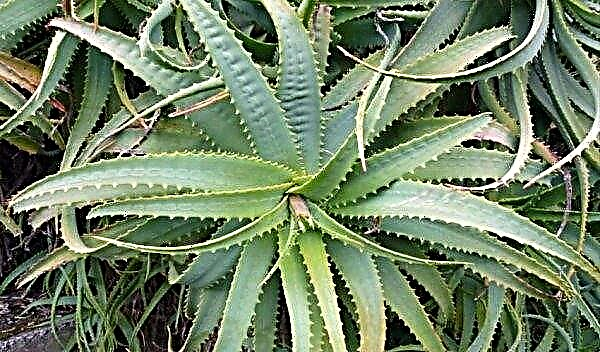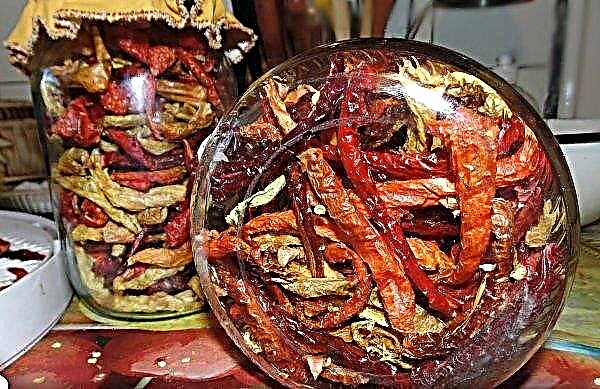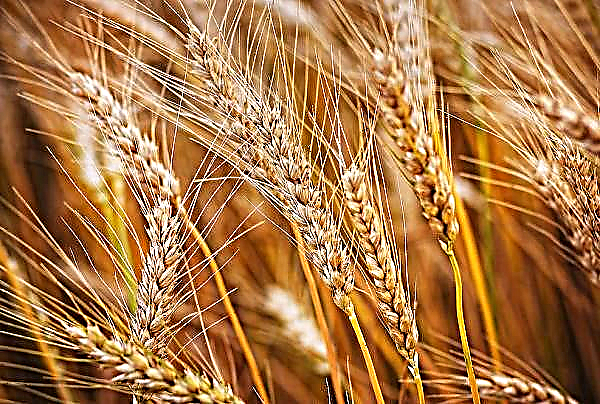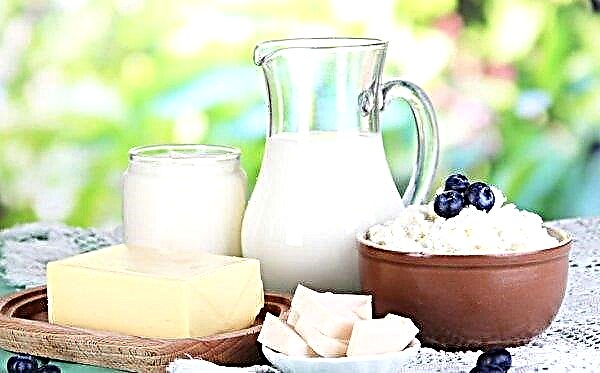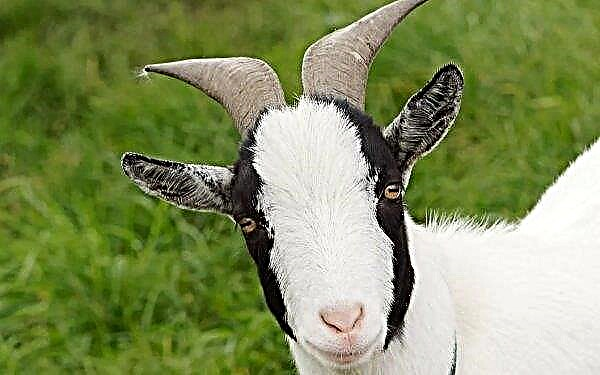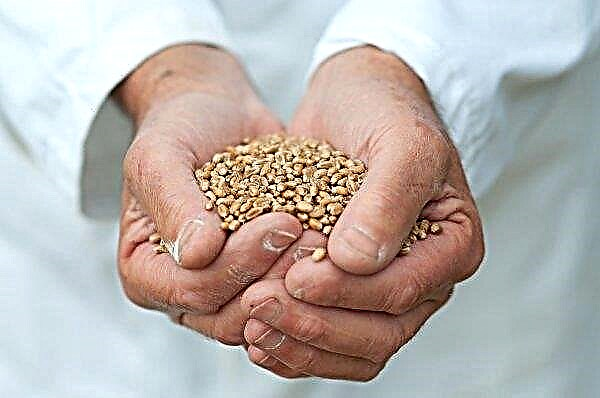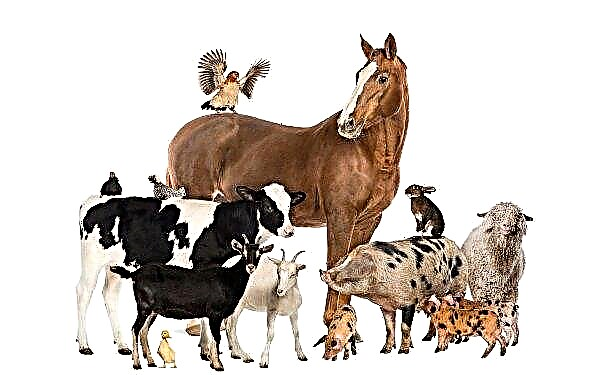Varieties of parthenocarpic cucumbers have a lot of advantages. They are resistant to diseases and adverse factors, do not require pollination, have an excellent taste, do not bitter. These varieties of cucumbers include the German hybrid Conductor.
Grade characteristics
This is a first generation hybrid obtained by breeders of Rijk Zwaan Welver GmbH (Germany) in 2006. The variety was introduced in the State Register of Breeding Achievements of the Russian Federation in 2011 and zoned. Recommended for open ground, but in the northern regions it must be grown in sheltered ground. It has a medium early harvest (40–42 days from germination).
Did you know? The name "cucumber" is derived from the Greek word "immature", and this is logical, because cucumbers are really eaten immature.
Description of bushes and fruits
This indeterminate type forms a medium-sized plant with medium branching. It is not very densely covered with medium-fine green foliage. The leaf plate is slightly wrinkled and attached to the stems with a long stalk. Shoots regenerate well. A node can have 1-3 female flowers.
Fruits grow up to a maximum of 14 cm, but usually have a length of 10 cm with a ratio of length and diameter of 3.1 to 1. The weight of greens is on average 67–80 g. They have a cylinder shape, thin green skin with short light stripes at the ends and small spotting. .
On the surface there are many small tubercles. Inside the pulp has a white-green color, good density and juiciness, small milk seeds. She tastes great - sweet, without bitterness.

Productivity
Dirigent cucumbers can be used to harvest high yields - 476–692 centners per 1 ha. In the beds, the crop, with proper care, reaches 10 kg per 1 m². This hybrid is characterized by a uniform yield of fruits.
Disease resistance
Like many hybrids, the variety has good immunity, tolerates adverse conditions in the area where it is zoned. It is resistant to olive blotch and cucumber mosaic virus.
Did you know? With regular consumption of fresh cucumbers, metabolism improves, and the body gets rid of "bad" cholesterol.
Advantages and disadvantages
- This variety can attract gardeners for the following qualities:
- high and stable productivity;
- lack of need for pollination;
- disease resistance;
- ability to endure weather vagaries;
- universality of the use of fruits;
- early ripening;
- transportability;
- great taste;
- presentation of fruits that do not outgrow.

The disadvantages of the variety include the fact that it is a hybrid and you have to constantly buy seed material.
Ways and features of landing
The variety performed well in open ground and in greenhouses. It can be sown with seeds immediately on the beds or to approximate the harvest with seedlings.
Seedling method
You can buy seedlings, but more reliable to grow yourself. Seeds are sown from mid-April to early May, depending on the region of cultivation and the method of cultivation (open or closed ground). To get seedlings of cucumbers of the variety Dirigent at home, you should disinfect the seeds in a 1% solution of potassium permanganate. Then rinse with water and dry. If the seeds have already been processed, then they are immediately sown in the ground.
Separate containers are used for planting, since cucumbers do not dive - they do not tolerate the transplant. You can buy ready-made soil for seedlings, or you can do it yourself by mixing the soil with beds, compost, peat and sand. The home-made mixture is disinfected by baking in the oven. 
1-2 seeds are planted in each container to a depth of 1.5 cm. If both sprout, then the second plant is removed. Crops are covered with a film and put in a warm place (+ 25 ... + 28˚С). Every day the film is removed and airing and humidity control are carried out. Shoots usually appear on the 2nd – 4th day. Then the film is removed, and the containers with sprouts are placed in an illuminated place with a lower temperature - about + 20 ° C during the day and + 18 ° C at night.
A week before planting, seedlings are hardened on the balcony. At first it is carried out briefly in the warmest time. Then the stay of plants in the fresh air is lengthened and before planting the plants should already spend the night there. Seedlings are planted on pre-prepared beds at the age of 20–25 days. The soil should warm up at the landing site to + 16 ... + 18˚С.
Important! You should not plant cucumbers in the same place or after other pumpkin crops (zucchini, pumpkins, melons, watermelons, squash) to prevent soil depletion.
Reckless method
Seeds can be sown directly into the ground around the beginning or middle of May. They are processed before planting in potassium permanganate and dried. The beds for planting have been prepared since the fall, introducing organic matter. In the spring you can make mineral fertilizers. It is good to use ready-made complexes based on phosphorus and nitrogen, for example, Ammophos or Diammophos.
When landing, it is convenient to use the hole method. Wells are made at a distance of 6-12 cm, and aisles - 50-60 cm.  In each hole to a depth of 1.5–2 cm, 3 seeds are planted. Then the crops are abundantly moisturized. Trellis is installed at the landing site.
In each hole to a depth of 1.5–2 cm, 3 seeds are planted. Then the crops are abundantly moisturized. Trellis is installed at the landing site.
Landing care
To obtain a good harvest of fruits, proper care must be taken.
Watering and feeding
This plant crop needs abundant hydration. It is especially important to water during fruiting, since with a lack of moisture, the fruits acquire a bitter taste. You need to water every 2-3 days.
Important! The temperature of water for irrigation should be in the range + 20 ... + 25 ° С. Cold water can trigger fungal infections.
In dry weather, hydration is carried out every day. For 1 m², 7-12 liters are required. For watering, morning or evening time is well suited. Moisturizing is carried out under the root, since dropping moisture on the foliage can cause sunburn.
To obtain a good harvest, it is necessary to provide the cucumbers with the supply of nutrients. For this purpose, it is necessary to carry out at least three top dressings:
For this purpose, it is necessary to carry out at least three top dressings:
- The first fertilizer application is carried out when 3 of these leaves appear. For this purpose, in a 10 liter bucket of water bred 1 tbsp. urea and 60 g of superphosphate.
- The second time they feed during the flowering period. During this period, it is useful to make foliar feeding with boric acid (2 g per 10 l of water). In this solution, you can add 40 drops of iodine. Conduct and fertilizer in the soil. For this purpose, 10 g of kalimagnesia and 40 g of superphosphate are diluted in 10 l of liquid.
- The third time they are fed during the formation and growth of the fruit. For feeding, a solution is prepared - in 10 l, 1 teaspoon of urea, potassium sulfate, superphosphate and 1 tbsp. a spoonful of sodium humate. Instead of humate, you can take 1 cup of rotted manure.
To get more fruits, gardeners recommend another feeding 14 days after the third feeding, using the same composition.
Formation
The formation of bushes of cucumbers is carried out to improve fruiting. This process contributes to the formation of the ovaries and eliminates the rapid growth of the lateral processes.
Important! Variety Conductor can be grown in the flooring and not carry out garter. In this case, the soil is covered with a thick layer of peat, sawdust and straw.
Do this in the following sequence:
- The process is carried out 7 days after the planting of seedlings.
- After they carry out the garter of the plant to the established trellises.
- As soon as the bush grows to the level of the wire, pinching is performed, leaving no more than three leaves on the stem.
- Then the stem is fixed with a rope. Lateral shoots do not pinch, as they are poorly developed.

Protection against diseases and pests
The variety of cucumbers Conductor is quite resistant to pests and various diseases, especially to fungal ones. But under adverse conditions, this plant crop can be affected by pests such as spider mites, aphids, whiteflies, thrips and slugs.
 1 - Whitefly; 2 - thrips; 3 - Slug; 4 - Spider mite; 5 - Black aphid
1 - Whitefly; 2 - thrips; 3 - Slug; 4 - Spider mite; 5 - Black aphid
When they appear, they use chemical treatments “Tandem”, “ATO Beetle”. The best method of protecting cucumbers from pests and diseases is prevention.
The main preventive measures are:
- comply with all crop rotation rules;
- carry out the removal of vegetation residues, regularly weed out weeds, as it is a hotbed of many diseases and insect pests;
- removal of dried plant areas (inflorescences, leaves);
- digging and loosening the soil;
- carry out watering only with warm water;
- when growing in greenhouse conditions, it is necessary to disinfect the entire greenhouse and soil;
- carry out ventilation in the greenhouse and maintain the required temperature;
- produce fertilizers that strengthen the crop well;
- conduct regular inspection of plantings to identify pests and diseases, so that at the first sign they take appropriate measures;
- perform preventive spraying against the appearance of pests and diseases.
From insects use chemicals "Fufanon", "Actara". For the prevention of diseases, treatments are carried out with copper sulfate or 1% Bordeaux mixture.
Important! The most effective folk remedies for the prevention and control of diseases and pests are solutions based on ash, garlic, onion husks, serum and iodine.
Dates of collection and storage of fruits
Harvest of cucumbers of variety Dirigent can be obtained already 36–40 days after planting seeds. The fruits are harvested as they ripen. Cucumbers are consumed fresh.
 Fruits are suitable for whole salting and preservation for the winter.
Fruits are suitable for whole salting and preservation for the winter.
It is advisable to keep fresh cucumbers in room conditions for no more than two days, and then they begin to fade. On the shelf of the refrigerator, vegetables are stored in a bag for up to 5-10 days. In the cellar at a temperature of + 6 ... + 8 ° C in boxes or cardboard boxes can be stored for a decade.
Dirigent cucumbers belong to parthenocarpics, therefore they do not need pollination, they have excellent taste, are resistant to some diseases, are fruitful and practically have no shortcomings. Like all early varieties, they can be sown immediately in the ground, but the seedling method will allow you to get an earlier crop.

